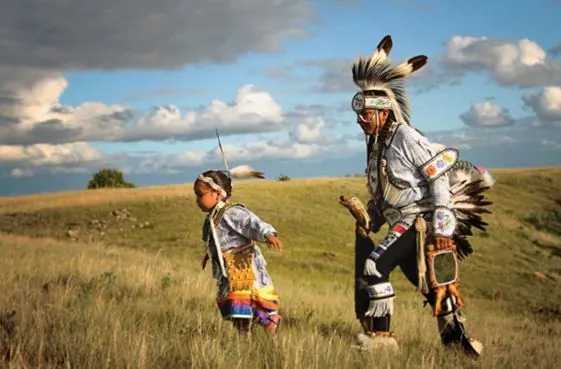Uncovering past wrongs: Understanding specific claims in Canada

A specific claim involves an allegation that Canada breached or did not fulfil a legal obligation flowing from Treaty, the Indian Act, or a legislative or fiduciary obligation owed to a First Nation.
Specific claims relate to past wrongs against First Nations, including those relating to the Crown’s failure to provide reserve lands or other assets under Treaty, or mismanagement of those lands or assets. A specific claim can only be filed by a First Nation. A specific claim must relate to events that occurred more than 15 years ago. In addition, a specific claim cannot be based on Aboriginal rights or title or Treaty rights related to activities of an ongoing and variable nature (such as hunting or fishing).
Some examples of specific claims filed with Canada include:
- Land-based claims (for example, a reserve boundary or survey dispute);
- Agricultural benefits (also known as “cows and plows”);
- Other Treaty benefits (such as twine and ammunition, flags and medals, medicine chests, education, Chief and Headmen suits of clothing and annuities);
- Mismanagement of First Nation trust monies by the Crown;
- Timber and resource-based claims;
- Unpaid Chief and Headmen salaries; and
- The failure to increase Treaty annuity payments.
The process of a specific claim
The specific claims process includes the following steps:
Step one: Apply for funding to hire a historical researcher and a lawyer.
Step two: The researcher prepares an expert report, the lawyer and the First Nation review this report and determine how to proceed.
Step three: The First Nation submits the claim to the Specific Claims Branch.
Step four: Within six months, the office of the Minister of Crown-Indigenous Relations and Northern Affairs Canada (CIRNAC) assesses the claim submission. If the submission meets the minimum standard, it is filed with the Minister. If the submission does not meet the minimum standard, it is returned to the First Nation and the First Nation has an opportunity to revise and resubmit it.
Step five: The Minister assesses the claim and determines whether to accept it for negotiation. The Minister and the First Nation may agree to negotiate or, if the Minister rejects the claim, the First Nation may either proceed to litigation or resubmit the claim.
Step six: The parties attempt to negotiate a final settlement. If this is not successful within three years, the First Nation may proceed to litigate in front of the Special Claims Tribunal.
Step seven: If the claim is not settled, the parties can litigate in front of the Tribunal.
What is the Specific Claims Tribunal?
The Specific Claims Tribunal is established by the Specific Claims Tribunal Act to offer specialized adjudication of specific claims. It is different than a Court of law. The Tribunal has a special ability to hear oral history evidence and to consider cultural diversity. Canada is not permitted to use delay as a defence against a First Nation’s claim in front of the Tribunal which means limitation periods do not apply.
The Tribunal can only award compensation in the form of money and cannot award anything over $150 million per claim. Compensation will generally include the current market value of the asset or benefit in question, as well as payment for loss of use while the breach was occurring. The compensation is awarded to the First Nation as a collective rather than to individual members.
If a First Nation is seeking anything other than monetary compensation, it cannot file a specific claim. For example, the Tribunal cannot order that a certain parcel of land be returned to a First Nation. However, the First Nation can use the financial compensation it receives to purchase land and can convert it to reserve land status if it wishes to do so.
Negotiation and settlement of specific claims
Canada and a First Nation can negotiate and settle a specific claim at any time, before or after the claim is filed, and even while the claim is being litigated before the Specific Claims Tribunal. Negotiation can also happen outside of the specific claims process. One way that this can occur is through a Recognition of Indigenous Rights and Self-Determination discussion table. In this instance, the parties come together prior to filing a claim to try and come to an agreement while focusing on the goal of reconciliation. The First Nation can apply for funding to support its negotiation costs for a Recognition of Indigenous Rights discussion table.
If negotiation is successful, a settlement agreement and a trust agreement are drafted. Canada generally will not allow Chief and Council to accept a specific claim settlement offer above a limited threshold, so a ratification vote must be held. Every member of the First Nation over the age of 18 will be entitled to vote on whether or not to accept the settlement agreement and the trust agreement. This process requires a large amount of preparation to ensure that the vote is conducted properly and that members are informed as to what they are voting on.
For the settlement agreement to be approved, 50%+1 of the First Nation’s membership over the age of 18 must vote in favour of it. If a majority vote is not obtained, a second ratification vote may be held. If the vote fails a second time, the First Nation is deemed to have rejected the settlement proposal. At that point, either negotiations can continue or the First Nation can proceed with litigation.
If the ratification vote is successful, the Minister of Crown-Indigenous Relations and Northern Affairs Canada and the First Nation will sign the settlement agreement and the money will be transferred to the First Nation’s trust.
If you have any questions about specific claims or the specific claims process, please do not hesitate to contact a member of MLT Aikins Indigenous practice group.
Note: This article is of a general nature only and is not exhaustive of all possible regulatory requirements, legal rights, or remedies. Laws may change over time and should be interpreted only in the context of particular circumstances. These materials are not intended to be relied upon or taken as legal advice or opinion. Readers should consult a legal professional for specific advice in any particular situation.








